|
Invited by: Maria Teresa Teixeira More details... Published on 10-09-2025 |
|
| IBPC Conference room IBPC, 13 rue Pierre et Marie Curie 75005 Paris, Ile de France |



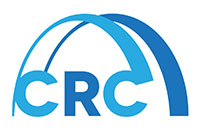






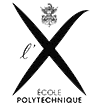





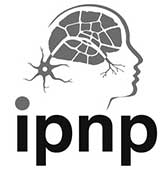



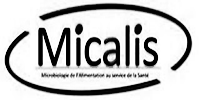






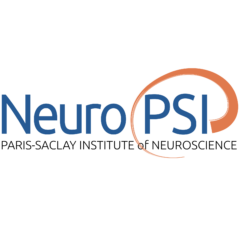
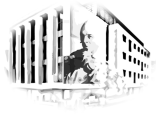





To display seminars of one specific institute, first press 'None' and then the institute of interest.
-
-
Invited by: IBENS - Equipe Clement LENA et Daniela POPA
More details...
Tags: Motor system, Cerebellum, Cerebral cortex, Cortex, Motor cortex, Pons, Cortico-olivary fibers, Corticopontocerebellar tract
Published on 19-11-2025


IBENS
salle Favard, IBENS 46 rue d'Ulm 75005 Paris -
Le cours est dedie aux connaissances les plus actuelles articulant la biologie du developpement et l etude cellulaire et moleculaire des cancers. Les cretes neurales et les melanomes, depuis leur formation jusqu a leur migration (metastases), ainsi que les cancers pediatriques d'origine embryonnaires tels que les medulloblastomes et neuroblastomes sont pris comme exemples. Le cours beneficie d une approche multidisciplinaire a multiples echelles (embryologie sur des modeles varies, biophysique, biologie cellulaire, transcriptomique, imagerie...). Il aborde egalement des approches therapeutiques. Le cours est ponctue par des tables rondes sur les carrieres dans le milieu academique ou dans l industrie,sur la publication d articles scientifiques ainsi que sur l ethique en experimentation animale.Des sessions posters de doctorants sont egalement organises et des prix pour les meilleurs posters seront decernes par les participants aux cours.
More details...
Published on 04-09-2025


Institut Curie
Centre de recherche - Orsay - Amphitheatre du Batiment 111 -
My research trajectory has focused on elucidating the role of tumor-derived Extracellular Vesicles (EVs) as key mediators of systemic immune responses. A core principle of my work is the study of native tumor EVs in physiologically relevant in vivo settings, facilitated by genetically engineering EV parental cells. This rigorous approach led to the discovery of a novel EV trafficking pathway in the lymph node, where tumor EVs are captured by subcapsular sinus (SCS) macrophages, a finding published in Science (2016). Building on this framework, our subsequent data uncovered a novel EV ? B cell axis. This work demonstrated that despite the potential for chronic immunosuppression, the antigens contained within these EVs are essential for generating potent, anti-tumor B cell responses. The emerging clinical significance of B cells as key prognostic and predictive indicators in cancer highlights B cell-mediated responses as a powerful, untapped pathway. Our data demonstrate that EV-mediated B cell activation suppresses tumor growth even in checkpoint-resistant models (under revision). Leveraging the same tools for studying native EVs, we also investigated the biology of Senescent Cell-Derived EVs (senEVs). This research demonstrated the unique immune-modulating capabilities of senEVs, distinct from other senescence-associated factors. By promoting senescent cell clearance, senEVs represent a novel therapeutic target to address cancer recurrence, thus showcasing the broad applicability of our in vivo EV methodology (Cancer Res 2025). Based on the evidence that B cell activation via EV-bound antigens is necessary to amplify anti-tumor responses, I now propose to translate this mechanistic insight into a tangible therapeutic reality. My strategy is to effectively convert the native antigenic payload of endogenous EVs into an in vivo cancer vaccine, offering a novel pathway to overcome primary resistance and drive durable, polyclonal T cell responses in solid tumors
More details...
Tags: Cell biology, Vesicles, Cells, Immune system, Extracellular vesicle, Vesicle, Antigen, Immunotherapy, Cellular senescence, Exosome, Microvesicle
Published on 15-10-2025


Institut Curie
Centre de recherche - Paris - Amphitheatre Constant-Burg - 12 rue Lhomond, Paris 5e -
TBA
More details...
Tags: Dubreuil, Draft:God Save The Tuches, Draft:Poongodi
Published on 18-10-2025


Laboratoire Jean Perrin
Laboratoire Jean Perrin - Campus Jussieu - T 22-32- 4e et. - P407 -
Invited by: Functional Genomics seminar series
More details...
Tags: Rare disease, Artificial neural networks, Multimodal interaction, National Institutes of Health, Kay O'Halloran
Published on 14-11-2025


IBENS
salle Favard, IBENS 46 rue d'Ulm 75005 Paris -
Invited by: Thomas Bourgeron
The INCEPTION aims to develop a core structure to mobilize data resources, numerical sciences, and fundamental experimental biology in various health issues. The inception program uses Integrative Biology, Social Science, and Data Science to ...
More details...
Tags: Genetic epidemiology, Personalized medicine, Genome-wide association study
Published on 01-10-2025


Institut Pasteur
Batiment: Auditorium & Atrium Francois Jacob -
Invited by: Thomas Bourgeron
The INCEPTION aims to develop a core structure to mobilize data resources, numerical sciences, and fundamental experimental biology in various health issues combining Integrative Biology, Social Science, and Data Science to understand the Emergence ...
More details...
Tags: LGBTQ history in Greece, Symposium, Science, Social science
Published on 21-10-2025


Institut Pasteur
Batiment: Auditorium & Atrium Francois Jacob -
Invite par equipe Ladoux/Mege, Magali Suzanne (University of Toulouse, CNRS, Centre de Biologie Integrative (CBI), Toulouse, France) va presenter un seminaire de l’Institut Jacques Monod sur le theme : Spatio-temporal control of nuclear mechanotransduction during Epithelial-to-Mesenchymal Transition Resume : During epithelial-to-mesenchymal transition (EMT), cells generate mechanical forces. How the nucleus reacts to these mechanical cues, ensuring a tight balance between mechano-protection and mechanotransduction, is a key yet unresolved question. Here wedissect the spatio-temporal control of nuclear mechanostransduction during EMT, usingDrosophilamesoderminvagination as a model. We found that two conserved pro-EMT genes respond differently to compressive forces:whilesnailtranscription remains unaffected, compression is sufficient to activatetwisttranscription within seconds.We further revealed a spatially patterned genome-wide transcriptional response to EMT forces, with an apical mechanoprotection contrasting with a permissive basal nuclear environment. The direct recording of nascent transcription in response to a controlled nuclear micromanipulation provides compelling evidence of nuclear heterogeneity in the transcriptional response to forces. Overall, these results reveal that EMT nuclei respond directly and rapidly to mechanical forces, in a spatially defined pattern. Suzanne earned her PhD in 1999 from the University of Toulouse, followed by a postdoctoral fellowship at the CBM in Madrid, Spain. In 2005, she obtained a CNRS research position and worked at the IBV in Nice, France. From 2008 to 2010, she was a visiting scientist at Rockefeller University in New York, USA. She leads a team at the Centre de Biologie Integrative de Toulouse.She was awarded an ERC Consolidator Grant in 2015, was appointed CNRS Research Director (DR) the same year, became an EMBO member in 2022, and received the Louise Basset Prize from the French Academy of Sciences in 2023. Her team has uncovered how cell death shapes tissues by combining cell biology, biophysics, and modeling approaches. Currently, her research focuses on understanding how the integrity of epithelial tissues-critical for protecting and covering our organs-is maintained.
More details...
Tags: Cellular processes, Tissue engineering, Cancer pathology, Epithelialmesenchymal transition, Mesenchyme, Mechanotransduction, EMT, Cadherin-1
Published on 17-11-2025


Institut Jacques Monod
Institut Jacques Monod Salle Francois Jacob, 15 rue Helene Brion, Paris, France -
Invited by: Lisa Chakrabarti
The next GRS meeting will gather two speakers: Achille BROGGI Aix-Marseille Universite, CNRS, INSRM, Centre d’Immunologie de Marseille-Luminy (CIML) Type III interferons control of barrier function at mucosal sites Nathalie DEJUCQ-RAINSFORD Physiology and physiopathology ...
More details...
Tags: Centre d'immunologie de Marseille-Luminy, Mucosal immunology, Sida, Aix-Marseille University Faculty of Sciences
Published on 11-11-2025


Institut Pasteur
Batiment Fernbach, salle 68-rdc-03-05, -
Invited by: Helene MORLON - Seminaire IBENS
More details...
Tags: Draft:Center for Ethics and Law in Biomedicine
Published on 29-10-2025


IBENS
salle Favard, IBENS 46 rue d'Ulm 75005 Paris -
Invited by: Institut Necker Enfants Malades - Auditorium 3
Special Back-to-back Seminar - Aging amp; Neuropathologies - PART 1/2Seminar topic: Elucidating Neuroinflammatory Mechanisms Underlying Diabetes-Linked Cognitive Dysfunction.Dr. Mohammed Al-Onaizi is an Associate Professor of Neuroscience and Anatomy at the College of Medicine and Health Sciences, Abdullah Al-Salem University, Kuwait, and a Scientist at the Dasman Diabetes Institute under the Kuwait Foundation for the Advancement of Sciences. His research centers on the neurobiology of metabolic diseases, with a particular focus on how type 2 diabetes influences neuroinflammation, synaptic plasticity, and cognitive function.Following his doctoral training in Anatomy and Cell Biology at the University of Western Ontario, Canada, and postdoctoral work at Laval University, Quebec, Dr. Al-Onaizi has established an independent research lab exploring molecular mechanisms linking diabetes to Alzheimer&'s disease and related dementias. His laboratory integrates behavioral neuroscience, molecular imaging, and neuroimmunology approaches to uncover pathways driving cognitive decline in metabolic disorders.Dr. Al-Onaizi has authored over 20 peer-reviewed publications in leading neuroscience and metabolic journals, contributing to the understanding of cholinergic signaling, hippocampal regulation, and microglial function in neurodegeneration. His work has been supported by major institutional and national grants, including the Kuwait University Priority Research Grant and the Dasman Diabetes Institute Research Award, and he has presented his findings at international conferences such as FENS and the Alzheimer&'s and Parkinson&'s Congress.
More details...
Tags: Alzheimer's disease, Neurology, Amyloidosis, Dementia, Dasman, Neuroscience
Published on 18-11-2025


Institut Necker Enfants Malades
Mohammed Al-Onaizi -
Invited by: Institut Necker Enfants Malades - Auditorium 3
Special Back-to-back Seminar - Aging amp; Neuropathologies - PART 2/2Seminar topic: Targeting Intramural Periarterial Drainage for treatment of Alzheimer Roxana is a member of the UK Medical Research Council Dementia Platform UK Vascular Experimental Medicine committee and the UK government advisory committee for the effects of pollution on the brain, has served as the only European member of the American NIH strategy committee for funding in dementia. Roxana has won prestigious awards, including a Dementia Research Leader award from Alzheimer
More details...
Tags: Dementia
Published on 18-11-2025


Institut Necker Enfants Malades
Roxana Carare -
Every day 4 million of cells are turned over in the human body, about 90% of these cells are blood cells. The turn-over and therefore need for replenishment is particularly high for the short-lived myeloid lineages, including platelets. Hematopoietic stem cells (HSCs) ensure the constant replenishment of blood cells, passing through multiple stages of increasingly lineage-restricted progenitors. Although insults to the blood-forming system highlight the need for more rapid blood replenishment from HSCs, established models of hematopoiesis implicate only one, mandatory, differentiation pathway for each blood cell lineage. We previously identified a distinct HSC expressing von Willebrand factor (Vwf+ HSCs) that almost exclusively and stably replenishes platelets, unlike canonical Vwf- HSCs that replenish all the mature lineages. By tracking the clonal contribution of HSCs upon transplantation, we established that they utilize two cellularly and molecularly distinct differentiation pathways. Strikingly, single-cell RNA sequencing (scRNAseq) of the progenitor trajectories replenished by the two distinct HSC subsets revealed the absence of Flt3 RNA expression through the entire Vwf+ HSC progenitor pathway (platelet-restricted pathway). This finding allowed us to use Flt3Cretg/+ R26Tomato/+ mice for tracing the contribution of the two pathways both in steady-state and in response to stresses to the hematopoietic system. Importantly we were not only able to confirm the presence of the pathway in steady-state, but we also observed a selective activation of the platelet-restricted pathway upon progenitor depletion through cytotoxic treatments. These findings establish the existence of alternative HSC-progenitor pathways in platelet replenishment and provide a framework for enhancing platelet replenishment in settings where slow platelet recovery of platelets remains a significant challenge.
More details...
Tags: Cell biology, Blood cells, Hematopoietic stem cells, Developmental biology, Hematopoiesis, Haematopoiesis, Haematopoietic system, Platelet, Cellular differentiation, Myeloid tissue, Stem cell, Hematopoietic stem cell niche
Published on 19-11-2025


Institut Curie
Centre de recherche - Paris - Amphitheatre Marie Curie -
Understanding and predicting biological complexity requires robust computational approaches. This presentation offers a concise overview of modelling strategies applied across diverse biological systems. We explore pathogen-host interactions at cellular and tissue levels to simulate infection and colonization dynamics. In human health, we focus on leukemic cell modelling to investigate mechanisms of treatment resistance. We also address host-microbiota interactions, with applications in gut and skin ecosystems. Finally, we provide insights into how modelling biological regulatory systems—combining mechanistic approaches and AI-driven methods—can pave the way for predictive immunology, grounded in the latest advances in immunological research. This work is carried out by iMEAN, a bioinformatics startup founded in 2018 and based in Toulouse within the Toulouse White Biotechnology (TWB) biofoundry.iMEAN specializes in predictive modelling of biological systems and offers innovative bioinformatics solutions to address the complexity of living systems by combining mathematical modeling, metabolic and regulatory network analysis, and multi-omics data integration. Our models simulate cellular behavior, predict metabolic fluxes, and help identify therapeutic solutions, supporting academic and industrial researchers in optimizing their Research & Development projects, particularly in health, agri-food, and environmental sectors.
More details...
Tags: Bioinformatics, Systems biology, Modelling biological systems, Scientific modelling, Omics, Multiomics, Cancer systems biology
Published on 01-11-2025


Institut Cochin
Salle Rosalind Franklin -
Submit your abstract providing a short summary (one page max) of your spatial research project including the use of our Xenium platform in the context of human or mouse brain research, and get the chance to be awarded a 50% discounted pilot experiment using our "Xenium Mouse/Human Brain Gene Expression Panel" ! Review all panel information on our website The winner will be announced at the end of the seminar. Projects need to be starting by the end of June 2026 at the latest, and priority will be given to abstracts that provide a full overview of the project (scientific objectives, sample types, total number of samples to be analysed, ...).
More details...
Tags: Omics, Biotechnology, Spatial transcriptomics, 10x Genomics, Transcriptomics technologies
Published on 22-10-2025


I. Cerveau et de la Moelle
Submit your abstract providing a short summary (one page max) of your spatial research project including the use of our Xenium platform in the context of human or mouse brain research, and get the chance to be awarded a 50% discounted pilot experiment using our "Xenium Mouse/Human Brain Gene Expression Panel" ! Review all panel information on our website The winner will be announced at the end of the seminar. Projects need to be starting by the end of June 2026 at the latest, and priority will be given to abstracts that provide a full overview of the project (scientific objectives, sample types, total number of samples to be analysed, ...). -
The unavailability of live patient neurons for research has represented a major obstacle in the elucidation of the etiology of neurodevelopmental diseases and the discovery of efficient treatments. Reprogramming somatic cells into induced-embryonic like- pluripotent stem cells (iPSCs) provides unprecedented opportunities in generating human neuronal models of these diseases compatible with extensive in vitro studies. This presentation will consider the potential of human embryonic and induced pluripotent stem cells for modeling neurological disorders of developmental origin and as a cellular platform for preclinical drug discovery and optimization.
More details...
Tags: Stem cells, Biotechnology, Cell biology, Developmental biology, Cloning, Induced pluripotent stem cell, IPSCS, Embryonic stem cell, Stem cell controversy
Published on 16-11-2025


NeuroDiderot
salle de conferences 6eme etage du batiment Bingen, Point Rouge, Hopital Robert Debre, 48 boulevard Serurier - 75019 ou en visioconference -
Invited by: Philippe Bastin
The canonical genetic code contains 61 sense and 3 nonsense (stop) codons. Although it is almost universal, about 60 different genetic code variants have been described so far. Majority of these alterations evolved in ...
More details...
Tags: Molecular biology, Molecular genetics, Genetics, Gene expression, Protein biosynthesis, Genetic code, Parasitism, Protist, Genetically modified organism
Published on 06-11-2025


Institut Pasteur
Batiment Lwoff, salle Retrovirus, -
Aging is accompanied by striking changes across cell types, tissues and organs, with accumulating evidence supporting divergent trajectories of aging between females and males. Our lab studies drivers of such differences across several compartments, leveraging mouse models. First, a key compartment whose activity can be actively modulated by sex-dimorphic mechanisms throughout life is the immune system, whose function declines sharply with aging. Indeed, aspects of the immune responses differ between sexes, with a more robust immune response in females and an increased susceptibility to infection in males. One of our main cell models are macrophages, a core component of the innate immune system. Excitingly, we observed strong sex-differences in macrophage transcriptional and functional phenotypes, and as well as sex-dimorphic “omic” changes with aging, which show partial dependence on ovarian hormone exposures. Second, we have been taking advantage of a mouse model of adult somatic sex reprogramming to investigate the long-term impact of adult sex hormone exposure on shaping sex-differences with aging, with a focus on brain and cognition. Together, our data suggests that mechanisms involving both gonadal hormones and sex chromosomes fine-tune different aspects of mammalian aging and, thus, overall health and lifespan of males vs. females.
More details...
Tags: Animal anatomy, Asymmetry, Polymorphism, Sexual dimorphism, Sexual selection, Macrophage
Published on 06-11-2025


Institut Cochin
Salle Schapira -
Invited by: Michaela Muller-Trutwin
As part of the annual meetings of the Coordinated Action on Host-Virus Interactions: Basic and Translational HIV Research, the TheGeVec Group is hosting its first symposium on November 28th 2025: Shaping the Future of ...
More details...
Tags: Gene delivery, Biotechnology, Molecular biology, Applied genetics, Bioethics, Gene therapy, Pasteur Institute, Therapy
Published on 05-09-2025


Institut Pasteur
Batiment: Centre Francois Jacob Salle: Auditorium Francois Jacob -
The stimulator of interferon genes (STING) pathway plays an important and conserved role in antiviral immunity. Human STING (hSTING) has been shown to mediate antiviral immunity by activating the transcription factors interferon regulatory factor 3 (IRF3) and nuclear factor kappa-light-chain-enhancer of activated B cells (NF-?B). The activation of IRF3 by hSTING involves the C-terminal tail (CTT) of hSTING and TANK-binding kinase 1 (TBK1), and this process is well-described. In contrast, the molecular mechanisms underlying NF-?B activation remain unclear. To elucidate this mechanism, we exploited the conserved Drosophila melanogaster STING (dSTING) pathway to uncover these mechanisms. Similar to the human pathway, dSTING confers antiviral immunity. However, dSTING lacks the CTT and drives the expression of antiviral genes via the NF-?B homolog Relish. Interestingly, there are features of dSTING and hSTING mediated NF-?B signaling which are conserved throughout evolution of animals. To elucidate how STING activate NF-?B signaling, we have developed a proximity labeling approach that enables the specific detection of activity-dependent STING interactors. We demonstrate that IKK? is recruited by STING upon activation and that the recruitment of IKK? is essential for STING-mediated activation of Relish. Moreover, studies in human cells indicate the pivotal role of linear ubiquitination in the interaction between IKK? and STING. Our findings suggest an evolutionarily conserved mechanism of STING-mediated NF-?B activation which existed prior to the evolution of the CTT and the IRF3 pathway. Keywords: NF-?B, STING, signaling mechanism, antiviral immunity, proximity labeling.
More details...
Tags: Transcription factors, Immune system, TANK-binding kinase 1, NF-B, Stimulator of interferon genes, IRF3, CGASSTING cytosolic DNA sensing pathway, SNX8
Published on 22-10-2025


Institut Curie
Centre de recherche - Paris - Amphitheatre Helene Martel-Massignac (BDD) -
Invited by: Nathalie SPASSKY - Section Biologie du Developpement
More details...
Tags: Embryology, Developmental biology, Gastrulation, Embryo, Epiblast, Germ layer
Published on 16-11-2025


IBENS
salle Favard, IBENS 46 rue d'Ulm 75005 Paris -
COVID-19 can induce a plethora of neurological complications in some patients. However, it is still under debate whether SARS-CoV-2 directly infects the brain or whether CNS sequelae result from systemic inflammatory responses triggered in the periphery. In a joint effort at the California National Primate Research Center, we developed a model of COVID-19 in young and aged non-human primates, characterized by substantial neuropathology within days after infection. In this talk, we will discuss how the application of high-resolution microscopy has been helpful in quantifying SARS-CoV-2 pathology across various regions of the olfactory cortex and interconnected brain areas. We will also cover how viral presence and robust neuroinflammatory response were worsened in aged animals, particularly in the presence of comorbidities such as diabetes. Our study provides an initial framework for identifying the molecular and cellular mechanisms underlying SARS-CoV-2 neurological complications, which will be crucial in reducing both the short-term and long-term burden of COVID-19.
More details...
Tags: SARS-related coronavirus, COVID-19, SARS-CoV-2, Impact of COVID-19 on neurological, psychological and other mental health outcomes
Published on 16-11-2025


NeuroDiderot
salle de conferences 6eme etage du batiment Bingen, Point Rouge, Hopital Robert Debre, 48 boulevard Serurier - 75019 ou en visioconference -
Invited by: Vincent VILLETTE - Section Neurosciences
Abstract : Understanding complex cognitive functions starts with elucidating how information is encoded and transmitted within individual brain microcircuits. To achieve this goal, we need recording techniques capable of capturing the activity of large populations of neurons with a temporal precision close to the timescale of spikes and a spatial resolution high enough to resolve their spatial organization. Moreover, these techniques should be compatible with well-established and well-validated behavioral paradigms. Traditional extracellular recording techniques have drawbacks regarding their ability to identify genetically defined cell types and are of limited use for studies of subcellular dynamics. Two-photon (2P) functional imaging stands out by offering subcellular spatial resolution and near-spike temporal resolution, so it has emerged as one of the workhorses to study neural populations’ coding and computational properties. However, its application had been limited by the bulky nature of conventional 2P imaging systems, restricting studies to head-fixed animals. Over the last two decades, considerable progress has been made in developing portable microscopes specifically tailored for freely-moving-animal functional imaging. This talk introduces our recent work in developing new generations of 2P miniscopes with resolution, field of view, speed, and z-scanning capability similar to that of 2P benchtop microscopes. I will highlight key applications from my group and our collaborators, showcasing how this technology contributes to studying the neuronal computation rulesets in cortical microcircuits. Additionally, I’ll discuss the current limits and perspective for future developments.
More details...
Tags: Microscopy, Optical microscopy, Two-photon excitation microscopy, Microscope
Published on 19-11-2025


IBENS
salle des Résistants, ENS, 45 rue d'Ulm 75005 Paris -
Ce seminaire est organise par l’Institut Jacques Monod et le laboratoire Epigenetique et Destin Cellulaire dans le cadre de l’inIdEx FORMULA, Raphael Guerrois (Integrative Biology of the Cell (I2BC), CEA, CNRS, U P-Saclay, Gif-sur-Yvette) va presenter un seminaire de l’Institut Jacques Monod sur le theme : Decoding protein interaction networks with AI-driven evolutionary insights Resume : The rapid advancements in artificial intelligence have, within a few years, enabled the prediction of the three-dimensional structure of most proteins at atomic resolution [1]. These predictions critically depend on the evolutionary information available in the sequences of homologous proteins. Beyond modeling individual proteins, there is now a fundamental challenge to establish the most comprehensive mapping possible of macromolecular assemblies, which are central to cellular function. This goal faces several constraints, such as the combinatorial complexity of the interaction space and the type of evolutionary information needed to identify coevolution signals, which are much weaker at complex interfaces, especially in disordered regions of proteins. To achieve this goal, we are setting up computational pipelines [2, 3] with the aim of targeting the difficult task of predicting interactions mediated by disordered regions and pushing further the current boundaries to predict the structure of assemblies at large scale, addressing issues of conformational changes [4] and interaction specificities.
More details...
Tags: Artificial intelligence, Computational neuroscience, Cybernetics, Data science, Jacques Monod, Gif-sur-Yvette, Saclay
Published on 03-11-2025


Institut Jacques Monod
Institut Jacques Monod Salle Francois Jacob, 15 rue Helene Brion, Paris, France -
Ce seminaire est organise par l’Institut Jacques Monod et le laboratoire Epigenetique et Destin Cellulaire dans le cadre de l’inIdEx FORMULA, Raphael Guerois (Integrative Biology of the Cell (I2BC), CEA, CNRS, U P-Saclay, Gif-sur-Yvette) va presenter un seminaire de l’Institut Jacques Monod sur le theme : Decoding protein interaction networks with AI-driven evolutionary insights Resume : The rapid advancements in artificial intelligence have, within a few years, enabled the prediction of the three-dimensional structure of most proteins at atomic resolution [1]. These predictions critically depend on the evolutionary information available in the sequences of homologous proteins. Beyond modeling individual proteins, there is now a fundamental challenge to establish the most comprehensive mapping possible of macromolecular assemblies, which are central to cellular function. This goal faces several constraints, such as the combinatorial complexity of the interaction space and the type of evolutionary information needed to identify coevolution signals, which are much weaker at complex interfaces, especially in disordered regions of proteins. To achieve this goal, we are setting up computational pipelines [2, 3] with the aim of targeting the difficult task of predicting interactions mediated by disordered regions and pushing further the current boundaries to predict the structure of assemblies at large scale, addressing issues of conformational changes [4] and interaction specificities.
More details...
Tags: Artificial intelligence, Computational neuroscience, Cybernetics, Data science, Jacques Monod, Gif-sur-Yvette, Saclay
Published on 04-11-2025


Institut Jacques Monod
Institut Jacques Monod Salle Francois Jacob, 15 rue Helene Brion, Paris, France -
Despite major advances in systemic therapies, outcomes for patients with metastatic uveal melanoma remain poor. Since up to 90% of patients develop liver metastases, the liver has become the primary target for locoregional treatment strategies. This lecture will review the evolution and future of these approaches, focusing on isolated hepatic perfusion (IHP) and percutaneous hepatic perfusion (PHP). Data from registry studies, randomized controlled trials such as SCANDIUM, and the recent FOCUS trial highlight the capacity of locoregional therapy to provide meaningful benefits. Emerging evidence also indicates that regional treatments may trigger immunogenic cell death, creating opportunities for rational combinations with systemic immunotherapy. Recent trials, including CHOPIN and SCANDIUM III, are evaluating the safety and efficacy of combining PHP with immune checkpoint inhibitors, with endpoints spanning survival, progression, quality of life, and biomarker discovery. Together, these efforts are redefining the role of locoregional therapy from liver-directed palliation toward integrated multimodal treatment, with the potential to extend survival in patients beyond what is achievable with systemic therapy alone. Teams link: https://teams.microsoft.com/l/meetup-join/19%3ameeting_YTE3NWRmNjktMjFkOC00NjBkLWE2ZGMtNWEzMmQ4NmNhYTA1%40thread.v2/0?context=%7b%22Tid%22%3a%22183ad437-6002-48ad-8886-c5885ce9be1a%22%2c%22Oid%22%3a%221ed1e97e-4bdf-4145-b23a-9858c31bd9e7%22%7d
More details...
Tags: Hepatology, Uveal melanoma, Percutaneous hepatic perfusion, Melanoma, Liver metastasis, DecisionDx-UM
Published on 26-09-2025


Institut Curie
Centre de recherche - Paris - Amphitheatre Constant-Burg - 12 rue Lhomond, Paris 5e -
Invited by: Maria Teresa Teixeira
The DNA Damage Response (DDR) is a complex signaling cascade elicited in the cell by damaged DNA, orchestrated by apical protein kinases, assisted by sensors and effectors. The two master kinases upstream of the DDR, ATR and ATM, are thought to mainly respond to single-stranded DNA and double strand breaks, respectively. However, non-canonical types of DDR have been reported (compact chromatin, mechanical or oxidative stress, among others), meaning that there exist stimuli equally capable of launching the DDR, yet in the absence of actual DNA damage. Overall, it remains poorly understood which is the actual signal, or signals, engaging these kinases. Building on the knowledge that ATM and ATR belong to the phosphatidyl-inositol-3-phosphate (PI3P)-kinase-related kinase family, we interrogated in the past if ATM and / or ATR can bind to, or be influenced by, phosphoinositides or other types of lipids. Of note, ATR has been found, in at least four previous studies, to sense the physico-chemical properties of phospholipids. We have discovered that ATM binds phosphatidyl-inositol-4-phosphate (PI4P) at the Trans Golgi, which allows it to remain anchored in an inactive (and non-phosphorylated) status. Activated ATM working in the nucleus can be titrated by the Golgi if PI4P levels at this location increase. Reciprocally, if PI4P levels decrease at the Golgi, ATM becomes more available to readily respond to DNA lesions inside the nucleus. Concerning ATR, we found thatATR combines its ability to sense DNA damage and phospholipid profiles to finetune the response to DNA lesions in a manner dependent on metabolic cues. We are confronting at present an even more surprising (yet simple) rule: DNA damage can be felt by membranes without the intermediate action of a DDR protein cascade. Inspired by compelling examples occurring in the mitochondria during the quality control of mitochondrial DNA, we are defining now general principles of this DNA-membrane signaling axis in the nucleus. Overall, I will discuss how the lipid profile of the nuclear envelope and other cellular membranes, which evolve in time and space, exerts a control over the response to DNA damage.
More details...
Published on 10-09-2025


IBPC
Conference room IBPC, 13 rue Pierre et Marie Curie 75005 Paris -
Séminaire en français. L'écoute active : une technique de communication mais aussi une façon d'être pour mieux communiquer ! Est-ce une méthode, une philosophie ou un art ? En s'appuyant sur de nombreux exemples, Alexandre Philips nous présentera cette approche utile tant au niveau professionnel que personnel ! Alexandre Philips est invité par les CSCAs.
More details...
Published on 06-11-2025


Institut Cochin
Salle Rosalind Franklin -
During the S-phase of the cell cycle, genetic material is replicated and packaged into chromatin. This requires the deposition of newly synthesized histones for the maintenance of the architecture. Using the unusual feature of incorporation of exogenous proteins within the naturally synchronous syncytial cell of Physarum polycephalum, tagged exogenous proteins can be tracked at specific stages of the cell cycle. Besides the introduction of the model system, we will examine the usage of H3 variants throughout the S-phase of Physarum and the effects of the incorporation of trace amounts of H3K27M on the epigenetic landscape.
More details...
Tags: Epigenetics, Physaraceae, Post-translational modification, Physarum, Histone, Chromatin, S phase
Published on 23-10-2025


Institut Curie
Centre de recherche - Paris - Amphitheatre Marie Curie -
Prof. Dr. med. Dirk Busch Technical University of Munich TUM School of Medicine Institute for Medical Microbiology, Immunology and Hygiene
More details...
Tags: Immunology, T cells, Immune system, CD8, Epitope, Single-pass transmembrane proteins, Major histocompatibility complex, Alessandro Sette
Published on 22-11-2025


Institut Curie
Centre de recherche - Paris - Amphitheatre Constant-Burg - 12 rue Lhomond, Paris 5e -
Invited by: Cirb
More details...
Published on 15-10-2025


College de France
au College de France - Salle D2 11 place Marcelin Berthelot - 75005 Paris -
Escherichia coli is an important opportunistic bacterial pathogen and one of the most frequent causes of Urinary Tract Infections (UTIs). One of the key survival strategies of E. coli is its ability to form “biofilm”, in which the bacteria are encased in extracellular polymeric substances. This makes them highly resistant to standard antibiotics treatment and also frequently lead to chronic or relapsing infections. Therefore, there is a dire need for novel alternative therapeutics to treat such bacterial infections. In my research work, I have shown that the FDA-approved antifungal drug, 5-fluorocytosine (5-FC), can effectively disarm E. coli, stripping off the virulence factors essential for its pathogenesis and hamper biofilm formation. Most importantly, I identified that when 5-FC is combined with common penicillin-like antibiotics (beta-lactams), it creates a powerful synergy that can kill even the highly protected bacteria residing within the biofilm shield. This novel "Sabotage and Strike" strategy—dismantling the bacteria's defenses and striking with antibiotics—represents a promising approach to combat persistent infections and tackle the global challenge of antibiotic resistance. Paris postdoc seminar series
More details...
Tags: Bacteriology, Biological matter, Environmental soil science, Membrane biology, Environmental microbiology, Biofilm, Antivirulence, Antimicrobial resistance, Escherichia coli, Extracellular polymeric substance, Biofilm prevention, Dispersin B
Published on 20-09-2025


Institut Cochin
Salle Rosalind Franklin -
Oocytes are female germ cells that become eggs. They have the remarkable ability to survive for long periods of time, up to 50 years in humans, while retaining the potential to give rise to a new organism.We know surprisingly little about the molecular mechanisms that protect oocytes from cellular ageing, and why these mechanisms eventually fail with advanced age. In my talk, I will discussour recent discoveries thataddresstwo major challenges oocytes face during their long lifespan. First, I will show how oocyteslimitdamage caused by Reactive OxygenSpecies (ROS) by rewiring their metabolism. Second, I will describe how mouse and human oocytes manage protein aggregation and, more broadly, preserve protein homeostasis. Together, these discoveries highlight the remarkableadaptations of oocyte metabolism and proteostasis that support the long oocyte lifespan. http://www.crg.eu/en/elvan -boke
More details...
Tags: Germ cells, Senescence, Oocyte, Ageing, Proteostasis, Reactive oxygen species, Metabolism
Published on 30-10-2025


Institut Curie
Centre de recherche - Paris - Amphitheatre Helene Martel-Massignac (BDD) -
Invited by: Sylvie Rabot
How the gut microbiota and its host communicate and react together to environmental stimuli is essential to understand a mammalian holobiont. In a biomedical context, such communication might be a reason for staying healthy, if it is balanced, or associated with diseases when the communication is disrupted. Microbiota and host produce metabolites that can regulate and limit epigenetic enzymes, controlling epigenetic marks in the host. Using a germ-free mouse model, including males and females, we investigated how biological sex and microbiota status influenced the microbiota-nutrient metabolism-host epigenetic? axis of communication. We studied microbes, metabolism, epigenetic marks and gene expression in the host, focusing on the liver as target tissue, through a multi-omics and correlational analysis approach. Our results show the interaction of biological sex and microbiota in controlling the levels of DNA methylation in an additive manner. Where males are hypomethylated compared to females, and where the presence of microbiota accentuates this pattern in both sexes, being more pronounced in males. Males without microbiota present a feminised pattern of gene DNA methylation and expression. We have also observed a strong positive correlation between the levels of host DNA methylation in genes involved in testosterone degradation, and the Ruminococcaceae family, more abundant in males than females. Altogether, we propose Ruminococcaceae as a key ecological player in the holobiont ecosystem, influencing host gene regulation in a sex-dependent manner, through the modulation of DNA methylation levels of steroids degradation genes.
More details...
Tags: Epigenetics, DNA, Bacteriology, Microbiomes, Post-translational modification, DNA methylation, Microbiota, Methylation, Gut microbiota, Regulation of gene expression, Ecological evolutionary developmental biology, Cancer epigenetics
Published on 22-08-2025


Institut Micalis
Auditorium 442 - Institut Micalis -
The lesson learned over the past 15 years is that cancer immunotherapies efficacy rely on tumor biological features (PD-L1, TMB, CD8, TLS,) & rather than the histo-morphological description of the tumor tissue. However, still in 2025, we keep enrolling patients in clinical trials without looking at their drug target expression or their specific tumor biology. In this seminar, we will present how we are currently implementing fresh tissue explorations to enable patient selection and stratification in the context of prospective clinical trials in order to build personalized cancer immunotherapies.
More details...
Tags: Cancer immunotherapy, Immunotherapy, Cancer, Experimental cancer treatments, Tumor antigens recognized by T lymphocytes, Nanomaterials and cancer
Published on 17-11-2025


Centre de Recherche des Cordeliers -
Invited by: Morgane Bomsel - Frederic Bouillaud - Sandrine Bourdoulous - Catherine Postic - Dominique Salmon - Dominique Zeliszewski
More details...
Tags: Long COVID, Post-acute infections
Published on 05-09-2025


Institut Cochin
Amphitheatre Luton de la Faculte de Medecine, 24 rue du Fg St Jacques - 75014 -
Invited by: Paola Arimondo
More details...
Tags: Screening, Drug discovery, Society for Biomolecular Sciences, Draft:Vipergen
Published on 16-09-2025


Institut Pasteur
Batiment Duclaux, salle Duclaux amphitheater, -
More details...
Published on 14-05-2025


Inst. Bio. Paris Seine
7-9 quai Saint Bernard, 75005 Paris -
More details...
Tags: Fellows of the Royal Society, Raymond E. Goldstein, Faculty of Mathematics, University of Cambridge, Adriana Pesci
Published on 04-11-2025


Inst. Bio. Paris Seine
7-9 quai Saint Bernard, 75005 Paris -
Invited by: Drs D. Zala and R. de Santos
Microglia, the brain resident macrophages, are multifaceted cells that belong to the glial and immune systems. Beyond their role in immune defence, they are key actors of brain development, function, and homeostasis. Originating outside the central nervous system from yolk sac myeloid progenitors, microglia colonize the brain during early embryogenesis following a highly stereotypical spatiotemporal pattern. Along their brain colonization, they exhibit a remarkable cellular and transcriptional heterogeneity throughout development. Furthermore, by sensing a wide variety of local and systemic signals, microglia are positioned at a key interface between the brain and the environment. Our recent work explored how microglia develop and interact with their local environment during prenatal and early postnatal life. We specifically investigated the mechanisms guiding their colonization of the developing forebrain, focusing on how local and cell-type specific signals influence their distribution and proliferation. We also found that microglia impact key processes essential for proper brain development, highlighting their early and multifaceted roles in neural development. Altogether, our work reveals mechanisms orchestrating microglial colonization in the developing brain and sheds light on their key contribution to early brain development.
More details...
Tags: Microglia, Development, Inflammation
Published on 26-10-2025


Institut de Psychiatrie et Neurosciences de Paris
Room D Levy, Institut de Psychiatrie et Neurosciences de Paris (IPNP) UMR 1266 INSERM - Universite Paris Cite, 102-108 Rue de la Sante - 75014 Paris -
In every part of our bodies, cell types and anatomy are organized to carry out specialized functions, and the dorsal horn of the mammalian spinal cord serves as a beautiful example. It is characterized by a dazzling array of cell types arranged in a layered microcircuit architecture, with each layer receiving different sensory and descending neural inputs and contributing unique roles to animal behavior. In contrast with the ventral horn of the vertebrate spinal cord, which is a textbook example of morphogen signaling and discrete embryonic lineage domains, the development of the dorsal horn has remained an enigma. It is known that nearly the entire dorsal horn is formed from a common pool of seemingly homogenous progenitors during late spinal neurogenesis, but how? I will present my team&'s work on the developmental principles that shape the cell types and structure of the mouse spinal dorsal horn.
More details...
Tags: Sensory systems, Motor system, Skeletal system, Spinal cord, Posterior horn, Peripheral nervous system, Neuromere, Spinothalamic tract
Published on 22-10-2025


I. Cerveau et de la Moelle
Please join the conference in Paris Brain Institute auditorium. -
Invited by: IBENS Neuroscience Seminar
Brain activity and breathing rate influence each other but it remains unclear how the fine respiratory cycle features (e.g. inhalation amplitude or duration) impact neuronal network dynamics. By recording nasal pressure and neuronal activity in freely-moving mice, we detected respiratory pauses nested within breathing cycles that are characterized by a large variability in their duration. In wakefulness, these pauses largely dictate the respiratory rate of the animals and their onset marks drastic changes of neuronal activity when the latter is recorded within silicon probes in the olfactory piriform cortex and the hippocampus. Pause properties discriminate Wake, rapid eye movement (REM) and non-REM (NREM) sleep and accompany the infra-slow oscillations of noradrenaline and sigma power observed in NREM sleep. This seminar will address how the fine respiratory features coordinate with hippocampal circuit dynamics both in wake and sleep and reveal new relationships between brain functions and respiration.
More details...
Tags: Dream, Neurophysiology, Behavior, Non-rapid eye movement sleep, Parasomnias, Rapid eye movement sleep, Sleep in animals, Sleep, Hippocampus, Neuroscience of sleep, Sleep and breathing
Published on 22-11-2025


IBENS
salle Favard, IBENS 46 rue d'Ulm 75005 Paris -
TBA
More details...
Tags: Marbach, Caliciales, Draft:God Save The Tuches, Draft:Poongodi
Published on 18-10-2025


Laboratoire Jean Perrin
Laboratoire Jean Perrin - Campus Jussieu - T 22-32- 4e et. - P407 -
Living tissues are characterized by an intrinsically mechano-chemical interplay of active physical forces and complex biochemical signalling pathways. Either type of feature alone can give rise to complex emergent phenomena at the tissue scale, for example rigidity transitions triggering morphogenesis, or morphogen reaction-diffusion instabilities underlying fate patterning. An important question is thus how to quantitatively assess the contribution of these different cues to the large-scale dynamics of biological materials in cases where multiple phenomena are present or even coupled. In this talk, I will present a few examples we have worked on over the past few years, where mechano-chemical frameworks are key to understand tissue dynamics, in particular during collective cell migration, early embryo morphogenesis and regeneration.
More details...
Tags: Developmental biology, Morphogens, Evolutionary developmental biology, Morphogenesis, Morphology, Collective cell migration, Mechanochemistry
Published on 18-11-2025


Institut Curie
Centre de recherche - Paris - Amphitheatre Helene Martel-Massignac (BDD) -
Chemical Biology Mini Symposium
More details...
Published on 18-11-2025


Institut Curie
Centre de recherche - Paris - Amphitheatre Marie Curie -
Invited by: Philippe Bousso
The Immunology Department and Institut Imagine are organising a joint Immuno day? which will take place the Thursday, Dec 11th, 2025, 9:30 to 17:30, at Institut Pasteur, Duclaux Amphitheater. This event aims at foster ...
More details...
Tags: COVID-19 pandemic in France, Pasteur Institute, Louis Pasteur, Yasmine Belkaid
Published on 23-10-2025


Institut Pasteur
Batiment Duclaux Amphitheater, Institut Pasteur, salle , -
The structure of tissues is tightly linked to their function. During formation of functional organs, large-scale changes in tissue elongation, stretching, compression, folding/buckling, and budding impact the shape, position, packing, and contractility state of cells. Conversely, changes in single cell contractility, shape and position locally alter tissue organization and mechanics. Thus, forces function as important ques that are transmitted to the nucleus to coordinate gene expression programs to control cell states. On the other hand, excessive mechanical stresses have the potential to damage cells and tissues. In my presentation I will discuss our recent research on how cells sense mechanical forces and how these mechanosignals are integrated with biochemical inputs to alter cell states in health and disease.
More details...
Tags: Developmental biology, Cellular processes, Cell, In science, Cell biology, Morphology, Morphogenesis, Cadherin-1
Published on 19-11-2025


Institut Curie
Centre de recherche - Paris - Amphitheatre Helene Martel-Massignac (BDD) -
More details...
Tags: Liver disease, Chronic liver disease, Liver, Hepatology, Draft:Liver cell damage
Published on 20-11-2025


Centre de Recherche des Cordeliers -
More details...
Published on 14-05-2025


Inst. Bio. Paris Seine
7-9 quai Saint Bernard, 75005 Paris -
More details...
Tags: Villette, Ens
Published on 19-08-2025


Neural Networking Night
pub Le Piano Vache - 8 Rue Laplace, 75005 Paris -
Program here
More details...
Published on 19-11-2025


Laboratoire Jean Perrin
Laboratoire Jean Perrin - Campus Jussieu - T 22-32- 4e et. - P407 -
Invited by: Cirb
More details...
Published on 15-10-2025


College de France
au College de France - Salle D2 11 place Marcelin Berthelot - 75005 Paris -
Complex tissue-level organization achieved during development is critical for organ function. Mammalian kidneys rely on a branched urinary collecting duct tree that organizes thousands to millions of nephrons that are responsible for filtering blood. These structures develop by branching morphogenesis, which gives rise to the urinary tubule tree and nephrons. Defects that occur during this branching process result in aberrant tissue morphology and functional deficiencies after birth. My thesis aims to understand the interplay between tissue-level organization and mechanics during kidney development using a novel 3D culture technique. Tissue-level dynamics are often modeled in air-liquid interface (ALI) culture, which flattens and distorts the explant. To overcome this challenge, I first developed a 3D kidney culture method compatible with live imaging by suspending explants in hydrogel droplets. First, I hypothesize that a 3D encapsulating hydrogel environment would preserve organ architectures and in vivo-like tubule distribution that are not preserved in ALI culture. These are validated by quantifying tubule tip-tip distancing and dynamic rotation measured by live imaging. Next, I hypothesize that the mechanical properties of the embedding matrix influence explant development outcomes. By embedding explants in biological and synthetic hydrogel materials with tunable properties, I demonstrate that both matrix stiffness and adhesive properties independently contribute to kidney shape and nephrogenesis balance (number of nephrons per tip). Ongoing study is focusing on tracking and characterizing the cortical stromal cells as a potential translator between the external mechanical environment and nephrogenesis decisions. This work presents new systems for tracking and evaluating 3D kidney morphogenesis through live imaging and investigating the effect of genetic and mechanical perturbations on ex vivodevelopment.
More details...
Tags: Kidney, Endocrine system, Developmental biology, Evolutionary developmental biology, Morphogenesis, Morphology, Mammalian kidney, Hydrogel, Nephron, Explant culture, Urinary system, Plant development
Published on 21-11-2025


Institut Curie
Centre de recherche - Paris - Webinar -
Invited by: Yannick Allanore et Roberto Mallone
Developpement therapeutique chez la souris : Sylvaine You /// De la souris a l'Homme : les options therapeutiques aux stades precliniques du DT1 : Clementine Halliez /// Comprehension mecanistique et innovations therapeutiques des 20 dernieres annees : Jerome Avouac /// Resultats et lecons des approches de traitements dans la PR preclinique : Yannick Allanore /// Physiopathologie et depistage de la maladie coeliaque : chez qui, comment ? : Georgia Malamut
More details...
Tags: Auto-immune diseases
Published on 22-10-2025


Institut Cochin
amphitheatre Dausset de l'Hopital Cochin, 27 rue du Fg St Jacques 75014 -
More details...
Tags: Affect, Evolutionary psychology, Feeling, Neuropsychology, Leah Somerville, Jaak Panksepp
Published on 22-10-2025


NeuroPSI
Salle de conference Albe-Fessard -
More details...
Published on 14-05-2025


Inst. Bio. Paris Seine
7-9 quai Saint Bernard, 75005 Paris -
Invited by: Lionel NAVARRO - EEB Seminar Series
More details...
Tags: Animal models, Bruno Lemaitre, Drosophila, Effector, Daisho
Published on 24-10-2025


IBENS
salle Favard, IBENS 46 rue d'Ulm 75005 Paris -
More details...
Tags: Sergent, Enea Benedetto
Published on 19-08-2025


Neural Networking Night
pub Le Piano Vache - 8 Rue Laplace, 75005 Paris -
TBA
More details...
Tags: Thijs, Draft:God Save The Tuches, Draft:Poongodi
Published on 18-10-2025


Laboratoire Jean Perrin
Laboratoire Jean Perrin - Campus Jussieu - T 22-32- 4e et. - P407 -
Comprehension des bases moleculaires des tumeurs urotheliales pour ameliorer le diagnostic et les traitements Ce cours offre un apercu pratique et actualise des avancees dans la recherche, la biologie et le traitement des cancers urotheliaux. Il couvre les cancers de la vessie infiltrants et non infiltrants, les cancers des voies urinaires superieures ainsi que leurs metastases. Il met en lumiere de nouvelles connaissances sur les mecanismes de la maladie ainsi que des strategies diagnostiques et therapeutiques innovantes. Il est destine aux cliniciens et chercheurs engages dans le progres contre le cancer urothelial. L objectif de ce cours est de fournir une vue d ensemble precise et actualisee des dernieres recherches et des developpements cliniques dans le domaine du carcinome urothelial, qu'il s'agissedes cancers de la vessie invasifs et non invasifs du muscle, des cancers des voies excretrices superieures, et leurs metastases. Cela permettra a la fois de promouvoir une meilleure comprehension mecanistique de ces maladies, des methodologies utilisees pour les etudier et d'explorer de nouvelles strategies diagnostiques et therapeutiques.?
More details...
Published on 22-10-2025


Institut Curie
Centre de recherche - Paris - Amphitheatre Helene Martel-Massignac (BDD) -
Summury : CD4?Foxp3? regulatory T cells (Tregs) suppress antitumor immune responses and are therefore compelling targets for immunotherapy. However, the mechanisms governing Treg stability and suppressive function within the tumor microenvironment remain poorly understood. In this presentation, I will discuss recent unpublished findings. First, I will show that the tumor microenvironment promotes substantial Treg instability, as many Tregs lose Foxp3 expression. Consequently, a significant fraction of CD4?Foxp3? T cellstypically considered conventional CD4 T cells are actually ex-Tregs. Second, I will highlight the critical role of TNF receptor type 2 (TNFR2) expression by Tregs in regulating antitumor immunity. TNFR2 expressed on Tregs modulates local immune responses by influencing inflammatory cytokine production by effector T cells and inducible nitric oxide synthase expression by myeloid cells. Investigating Treg stability and TNFR2? Tregs within tumors provides deeper insight into the mechanisms controlling antitumor immunity.
More details...
Tags: Immunology, T cells, Immune system, Regulatory T cell, Tumor microenvironment, Cytokine, FOXP3, Infectious tolerance, IKZF2
Published on 17-11-2025


Centre de Recherche des Cordeliers -
Invited by: EGO-STENGEL Valerie
More details...
Tags: Memory, Memory consolidation, Consolidation
Published on 22-10-2025


NeuroPSI
Salle de conference Albe-Fessard -
Nous avons le plaisir d’annoncer la prochaine conference internationale : « Forces at Play : Emerging Themes in Mechanobiology - In Memoriam of Professor Michael P. Sheetz » qui se tiendra du 19 au 21 janvier 2026 a l’Institut Jacques Monod, Universite Paris Cite, Paris, France. Cet evenement special rend hommage a l’heritage du professeur Michael P. Sheetz, pionnier dans le domaine de la mecanobiologie, et reunira des chercheurs, des etudiants et des innovateurs de premier plan du monde entier afin d’explorer les dernieres avancees en matiere de mecanique cellulaire, de biophysique et de disciplines connexes. Retrouvez la liste des speakers ainsi que les informations concernant les inscriptions sur le site : https://mikeinmemoriam.sciencesconf.org/?lang=en Les inscriptions sont ouvertes jusqu’a la mi-novembre. Le comite d’organisation : Nicolas Biais, Nils Gauthier, Benoit Ladoux, Olivier Rossier
More details...
Published on 20-09-2025
Institut Jacques Monod
Institut Jacques Monod Amphitheatre Buffon, 15 rue Helene Brion, Paris, France -
TBA
More details...
Tags: Draft:God Save The Tuches, Draft:Poongodi
Published on 18-10-2025


Laboratoire Jean Perrin
Laboratoire Jean Perrin - Campus Jussieu - T 22-32- 4e et. - P407 -
TBA
More details...
Tags: Randlett, Draft:Poongodi, Draft:Punitha
Published on 06-11-2025


Laboratoire Jean Perrin
Laboratoire Jean Perrin - Campus Jussieu - T 22-32- 4e et. - P407 -
Invited by: Cirb
More details...
Published on 15-10-2025


College de France
au College de France - Salle D2 11 place Marcelin Berthelot - 75005 Paris -
Extracellular vesicles (EVs) are increasingly recognized as critical mediators in the pathogenesis of fungal infections, particularly those caused by Cryptococcus species—opportunistic pathogens responsible for life-threatening diseases in immunocompromised individuals. While structural models of fungal EVs have been proposed, they often overlook the natural heterogeneity within EV populations. Although the identification and functional analysis of EV subpopulations have been well explored in mammalian systems—and to a lesser extent in plants—this area remains underexplored in fungi. In this study, we isolated and characterized EVs from Cryptococcus using a combination of size-, weight-, and density-based separation techniques, allowing us to resolve distinct EV subpopulations. Importantly, we identified a previously uncharacterized small EV population, currently undergoing functional investigation. Preliminary data suggest this subpopulation may carry unique molecular signatures, with several candidates showing promise as biomarkers. Given the established roles of Cryptococcus-derived EVs in host–pathogen interactions, immune modulation, and the dissemination of virulence factors, these findings could significantly enhance our understanding of fungal pathogenesis. Ultimately, by revealing new layers of EV diversity, our work aims to facilitate the development of targeted biomarkers for early detection and to support novel therapeutic strategies focused on EV-mediated processes. Paris postdoc seminar series
More details...
Tags: Tremellomycetes, Yeasts, Vesicles, Cell biology, Zoonoses, Extracellular vesicle, Cryptococcus, Vesicle, Pathogenic fungus, EV, Arturo Casadevall, Thomas G. Mitchell
Published on 01-10-2025


Institut Cochin
Salle Rosalind Franklin -
We& investigate the dynamic interactions between leukemic cells and their vascular microenvironment. Combining& in vivo& imaging, humanized 3D models, and multi-omics approaches, we explore how the niche contributes to leukemia progression, treatment resistance, and immune evasion, particularly in the bone marrow and central nervous system.
More details...
Tags: Stem cells, Tumor microenvironment, Tumors, Bone marrow, Multiomics
Published on 17-11-2025


Centre de Recherche des Cordeliers -
Invited by: ESCHBACH Claire
More details...
Tags: Nervous system, Neurology, Neurophysiology, Neuroscience, Brain
Published on 22-10-2025


NeuroPSI
Salle de conference Albe-Fessard -
Ce cours a pour but de rassembler les bases, les connaissances recentes et les perspectives therapeutiques autour de l'utilisation du systeme immunitaire de l'enfant pour cibler les cancers pediatriques, des particularites biologiques chez l'enfant aux innovations les plus poussees d'ingenierie cellulaire. Il se focalisera plus particulierement sur les tumeurs solides pediatriques, en tirant les enseignements des succes recents et defis restants dans les hemopathies malignes de l'enfant. Il rassemblera des acteurs nationaux et internationaux impliques dans ce domaine, dont les avancees precliniques et cliniques recentes permettent d'esperer des progres therapeutiques majeurs dans les annees a venir. Objectifs Exposer aux participants les recentes avancees en immunotherapie des cancers pediatriques. Mettre en valeur les specificites des cancers pediatriques et de l'immunite des enfants a prendre en compte pour les approches d'immunotherapie. Explorer leur developpement en recherche fondamentale, preclinique et clinique.
More details...
Published on 23-10-2025


Institut Curie
Centre de recherche - Paris - Amphitheatre Helene Martel-Massignac (BDD) -
More details...
Tags: Gregory
Published on 20-11-2025


Centre de Recherche des Cordeliers -
More details...
Published on 02-09-2025


Inst. Bio. Paris Seine
7-9 quai Saint Bernard, 75005 Paris -
More details...
Tags: Ens, Carlos Costa
Published on 19-08-2025


Neural Networking Night
pub Le Piano Vache - 8 Rue Laplace, 75005 Paris -
More details...
Tags: Ens, cole normale suprieure
Published on 30-08-2025


Neural Networking Night
pub Le Piano Vache - 8 Rue Laplace, 75005 Paris -
TBA
More details...
Tags: Recho Omondi, Draft:God Save The Tuches, Draft:Poongodi
Published on 18-10-2025


Laboratoire Jean Perrin
Laboratoire Jean Perrin - Campus Jussieu - T 22-32- 4e et. - P407 -
More details...
Tags: Geraldine Jones, Geraldine, Geraldine Gonzlez, Desmond
Published on 20-11-2025


Centre de Recherche des Cordeliers -
More details...
Tags: Weil, Weil der Stadt, Richard Weil
Published on 20-11-2025


Centre de Recherche des Cordeliers -
More details...
Tags: Krysko
Published on 21-11-2025


Centre de Recherche des Cordeliers -
More details...
Tags: Marie-Hlne, Helene, Marie-Hlne Verlhac
Published on 21-11-2025


Centre de Recherche des Cordeliers -
More details...
Tags: Operas, Ulisse, Flavio Manzoni, Ulisse Cantagalli
Published on 19-08-2025


Neural Networking Night
pub Le Piano Vache - 8 Rue Laplace, 75005 Paris -
Invited by: Cirb
More details...
Published on 15-10-2025


College de France
au College de France - Salle D2 11 place Marcelin Berthelot - 75005 Paris -
Vers une comprehension quantitative de la dynamique nucleaire au cours du developpement et des maladies Les objectifs de ce cours sont de fournir un apercu des mecanismes epigenetiques et de leurs liens avec la chromatine. Les differentes fonctions du noyau impliquant le genome et son organisation seront discutees en insistant sur les limites technologiques et les nouvelles approches experimentales developpees. Les liens entre la perte des fonctions du noyau et le developpement de pathologies humaines seront presentes. Cette annee ce cours abordera plus amplement les aspects physiologiques et pathologiques de l'epigenetique, en lien avec le metabolisme et la determination et maintien de l'identite cellulaire. Le succes de ce cours repose sur une forte contribution des participants qui doivent assister de facon tres proactive a l'ensemble des activites organises, tels que les sessions de presentations de posters, les analyses d'articles (Journal Club), et les ateliers. (voir section Travail personnel et le Programme pour plus d information). Une session speciale sera aussi dediee a aux presentations et echanges avec 1-2 alumni du cours qui ont poursuivi leur carriere dans le domaine de l'epigenetique.
More details...
Published on 11-11-2025


Institut Curie
Centre de recherche - Paris - Amphitheatre Helene Martel-Massignac (BDD) -
More details...
Published on 15-10-2025


College de France
au College de France - Salle D2 11 place Marcelin Berthelot - 75005 Paris -
Ce cours etudiera le spectre complet de la biologie du genome, de l'organisation et de l'imagerie de la chromatine a l'epigenetique, a l'ADN mobile et a la dynamique evolutive. Au cours de six sessions ciblees, des experts de renommee internationale presenteront leurs dernieres decouvertes liees a l'identification et a la caracterisation fonctionnelle du genome non codant et discuteront de nouveaux concepts de regulation et d'evolution du genome, en mettant l'accent sur les outils experimentaux et informatiques. Les sessions thematiques comprendront des approches unicellulaires et translationnelles de pointe pour demeler la plasticite et l'heterogeneite cellulaires, interroger la regulation des genes et suivre l'evolution du genome dans la physiologie et la maladie. Ce cours offrira aux jeunes etudiants et aux chercheurs l'occasion d'elargir leurs connaissances et de discuter de leurs travaux avec une communaute scientifique internationale dans un environnement chaleureux et stimulant a l'Institut Curie a Paris.
More details...
Published on 23-10-2025


Institut Curie
Centre de recherche - Paris - Amphitheatre Constant-Burg - 12 rue Lhomond, Paris 5e -
Invited by: Francois Bontems
ReCombinaisons se veut un espace de rencontre et de discussion entre chercheuses et chercheurs (biologie-sante, sciences humaines et sociales, philosophie), autrices, auteurs et artistes de science-fiction, et public le plus large possible, pour reflechir ...
More details...
Published on 26-09-2025


Institut Pasteur
Batiment: CIS Salle: Auditorium -
More details...
Tags: Ranft, Ens
Published on 19-08-2025


Neural Networking Night
pub Le Piano Vache - 8 Rue Laplace, 75005 Paris -
More details...
Tags: Saclay, Paris-Saclay University
Published on 19-08-2025


Neural Networking Night
pub Le Piano Vache - 8 Rue Laplace, 75005 Paris -
More details...
Tags: Bregaglia, ItalySwitzerland border, Pizz Gallagiun
Published on 23-09-2025


Inst. Bio. Paris Seine
7-9 quai Saint Bernard, 75005 Paris -
Invited by: Anna-Bella Failloux
Grand challenges in vector-borne diseases Controlling vectors in the context of climate and environmental changes June 5th 2026 ? Institut Pasteur, Paris, France Registration is free but mandatory Registration form As part of the ...
More details...
Tags: Infectious diseases, Epidemiology, Vector calculus, Disease transmission, Disease vector, Parasitology, Vector, Euclidean vector, Climate change and infectious diseases
Published on 07-11-2025


Institut Pasteur
Batiment: Duclaux Salle: Amphitheatre Duclaux -
More details...
Tags: Fricker, Desdemona
Published on 19-08-2025


Neural Networking Night
pub Le Piano Vache - 8 Rue Laplace, 75005 Paris -
Cette journee sera consacree aux recherches fondamentales et appliquees dans le domaine en pleine expansion des interactions entre cellules stromales (en particulier les fibroblastes et les cellules endotheliales) et cellules immunitaires au sein du microenvironnement tumoral (TME). Au cours de la derniere decennie, le stroma tumoral est devenu une cible therapeutique prometteuse dans le cancer, les fibroblastes associes au cancer (CAF) jouant un role cle dans la structuration du TME, la regulation de la croissance tumorale, l'evasion immunitaire et la resistance aux chimiotherapies et immunotherapies. Le nombre d'experts en France travaillant dans ce domaine ne cesse de croitre, et nous ressentons le besoin d'organiser un symposium qui reunisse des chercheurs experimentes et des debutants afin de favoriser la creation d'une communaute. Inspire par les initiatives fructueuses des dernieres decennies autour de la recherche sur les lymphocytes et les cellules myeloides, ce symposium vise a aider un cercle pluridisciplinaire d'experts interesses par les fibroblastes du TME a etablir des consensus sur les pratiques experimentales, proposer des nomenclatures unifiees, partager des resultats et echanger des modeles. L'objectif de ce symposium est de renforcer les collaborations naissantes et d'accroitre la visibilite internationale de l'Institut Curie et de la France dans le domaine de l'etude du stroma dans le cancer. Il s'adresse a des personnes disposant d'au moins des connaissances de base en biologie ou immunologie (niveau recommande : Master). Cet evenement sera egalement une opportunite pour faire progresser la recherche translationnelle et le developpement de traitements anticancereux ciblant specifiquement les composants stromaux. Le symposium se tiendra le mardi 23 juin 2026, de 8h30 a 20h, dans l'Amphitheatre Constant Burg (12 rue Lhomond, 75005 Paris, niveau -1), le plus spacieux et confortable de l'Institut Curie, avec ses 196 places. Nous esperons accueillir entre 120 et 150 participants. Les scientifiques que nous avons invites et qui ont confirme leur participation pour presenter leurs projets et leurs resultats les plus recents dans le domaine du stroma, de l'immunite et du cancer, sont listes ci-dessous par ordre alphabetique : CONFERENCIERS PRINCIPAUX (KEYNOTE SPEAKERS) Alexandra Naba - Etats-Unis Shannon Turley - Etats-Unis INTERVENANTS (SPEAKERS) Corinne Bousquet - France Cedric Gaggioli - France Fatima Mechta-Grigoriou - France Lucie Peduto - France Helene Salmon - France Karine Tarte - France Danijela Vignjevic - France En complement, trois jeunes postdocs/chercheurs (1 venant de l'UE, 1 hors Paris et 1 parisien) seront selectionnes pour des presentations courtes (10 minutes + 5 minutes de questions). La selection se fera sur la base des resumes des posters soumis lors de l'inscription. Nous veillerons autant que possible a respecter la parite hommes-femmes parmi les intervenants. L'inscription au symposium sera gratuite mais obligatoire. Nous diffuserons largement l'annonce afin de maximiser la visibilite et d'attirer des chercheurs, etudiants, medecins et ingenieurs internationaux, qui devront prendre en charge leurs frais de voyage et d'hebergement. Une session de posters accompagnee d'un « vin et fromage » sera organisee en fin de symposium, mais les posters pourront etre affiches des le matin a proximite de l'espace cafe/dejeuner pour favoriser les echanges tout au long des pauses. L'IHU Cancers de femmes de l'Institut Curie sponsorise cet evenement, dont la thematique correspond a l'un de ses axes de recherche.
More details...
Published on 08-11-2025


Institut Curie
Centre de recherche - Paris - Amphitheatre Constant-Burg - 12 rue Lhomond, Paris 5e -
Cet evenement d'une journee sera consacre a la recherche fondamentale et appliquee dans le domaine en pleine expansion des interactions entre cellules stromales (notamment fibroblastes et cellules endotheliales) et cellules immunitaires au sein du microenvironnement tumoral (TME). Au cours de la derniere decennie, le stroma tumoral est apparu comme une cible therapeutique prometteuse dans le cancer, les fibroblastes associes au cancer (CAF) jouant un role cle dans la structuration du TME, la regulation de la croissance tumorale, la promotion de l'evasion immunitaire et la contribution a la resistance auxchimiotherapie et auximmunotherapies. Les scientifiques que nous avons invites et qui ont confirme leur participation pour presenter leurs projets et leurs resultats les plus recents dans le domaine du stroma, de l'immunite et du cancer sont listes ci-dessous par ordre alphabetique : CONFERENCIERS INVITES (KEYNOTE) Alexandra Naba - USA Shannon Turley - USA INTERVENANTS Corinne Bousquet - France Cedric Gaggioli - France Fatima Mechta-Grigoriou - France Lucie Peduto - France Helene Salmon - France Karine Tarte - France Danijela Vignjevic - France En plus de ces intervenants, trois jeunes post-doctorants/chercheurs (1 de l'UE, 1 hors Paris et 1 de Paris) seront selectionnes pour des presentations courtes (10 minutes + 5 minutes de questions). La selection se fera sur la base des resumes de posters soumis lors de l'inscription. Nous veillerons a assurer un equilibre hommes-femmes parmi les intervenants. L'inscription au symposium sera gratuite mais obligatoire. Nous diffuserons largement l'annonce du symposium afin de maximiser sa visibilite et d'attirer des chercheurs, etudiants, medecins et ingenieurs internationaux, qui prendront en charge leurs frais de deplacement et d'hebergement. Une session poster accompagnee de vin et fromage se tiendra a la fin du symposium, mais les posters seront affiches des le matin pres de la zone cafe/dejeuner pour encourager les echanges tout au long des pauses. L'IHU Cancers des Femmes de l'Institut Curie sponsorise l'evenement, car le theme s'inscrit dans l'une de ses priorites de recherche. Inscription gratuite mais obligatoire avant le 10 juin 2026:https://forms.office.com/e/pMdqmCLZcP
More details...
Published on 14-11-2025


Institut Curie
Centre de recherche - Paris - Amphitheatre Constant-Burg - 12 rue Lhomond, Paris 5e